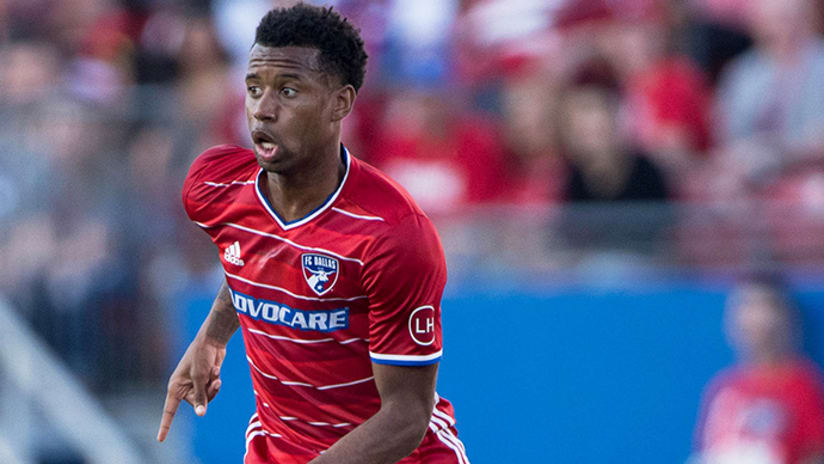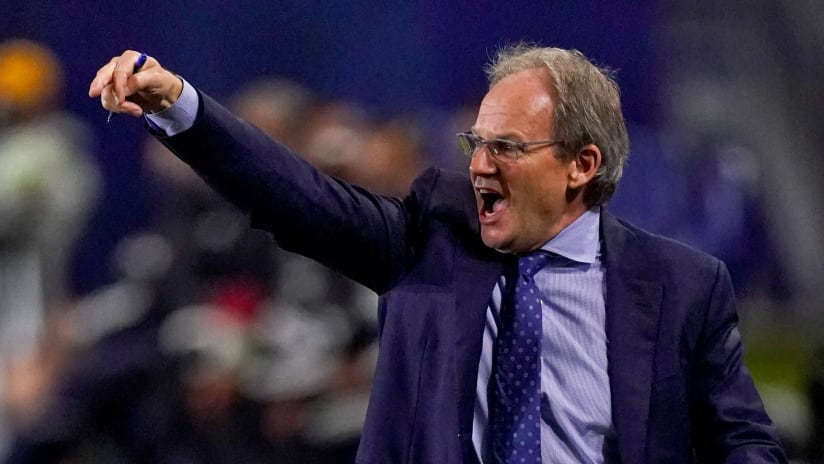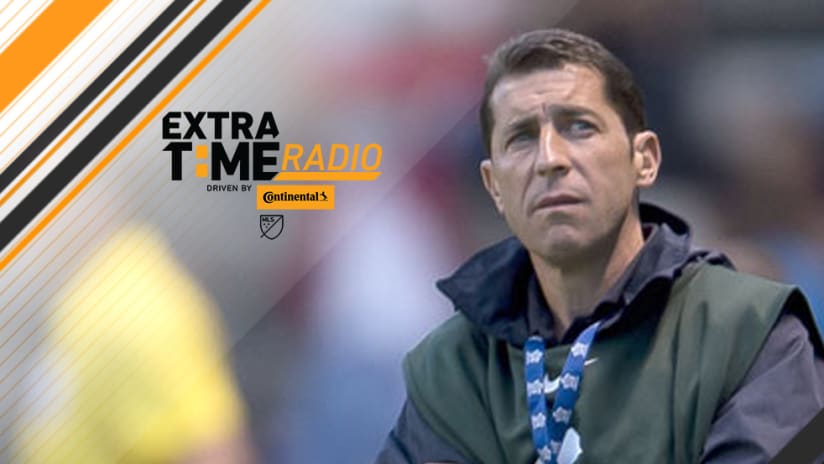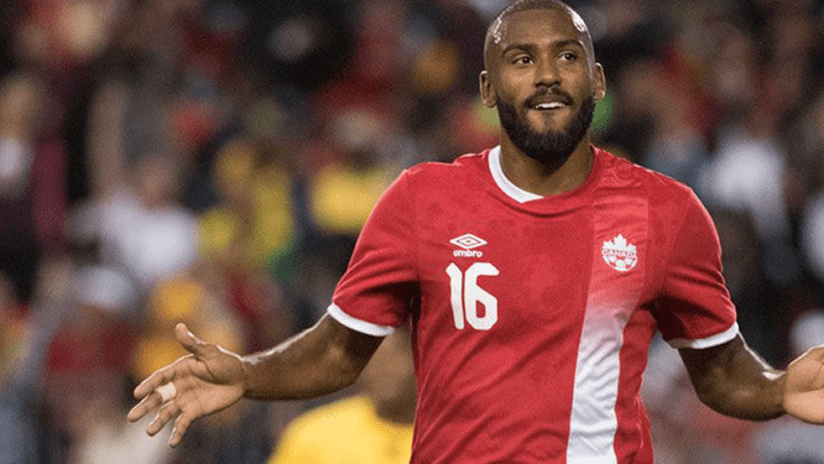Next week, we'll be revealing our list of the top 24 players under the age of 24 right here on MLSsoccer.com. One category of player that will no doubt feature heavily on the list? Homegrowns. MLSsoccer.com's Ben Baer and Matt Doyle exchanged e-mails about the current crop of Homegrown talent, evaluating which teams have constructed the best pathway for their academy products and recommending steps to make Homegrowns more impactful in the future. Their conversation is below:
BAER: So Doyle, we will be announcing the top 24 players under the age of 24 next week here on MLSsoccer.com and I wanted to get your take on a subject that many MLS fans want to hear about. We are likely to see many Homegrown players on the list next week but for me it’s always great to see these players progress from young prospects to regulars in the first team, i.e. Kellyn Acosta. What are the things that you enjoy seeing in this area?
DOYLE: To me it's the old "give a man a fish vs. teach a man to fish" parable. If you teach a man to fish, you feed him for the rest of his life, right? Well, if you teach a team to create professional soccer players out of the locally available talent, you're feeding that team for the rest of its life.
In other words: I'm a big believe in structures and systems and replicability. The thing I enjoy most isn't just seeing Kellyn Acosta – it's seeing that Victor Ulloa came through two years before Acosta, and Weston McKennie two years after. The structure and system is in place in Dallas (and a dozen other spots now), and that tells me that what MLS is doing is sustainable.
You can never plan to create Lionel Messi. But you can plan to create good, professional soccer players. That's what's happening now, and I love it.
BAER: We are definitely starting to see these players come through, at younger and younger ages, but what I’m worried about is seeing these players on the field. With everybody continuing to increase their spending on players, we are beginning to see some signs that North American players aren’t getting as many opportunities.
Obviously USL will continue to be an important piece in the development chain, as it will give players the time they are lacking with the first team, but is this enough to ensure that we will continue to see more and more Homegrowns become regulars in MLS? If not, what can players/teams do to make sure the players they are signing become these MLS regulars?
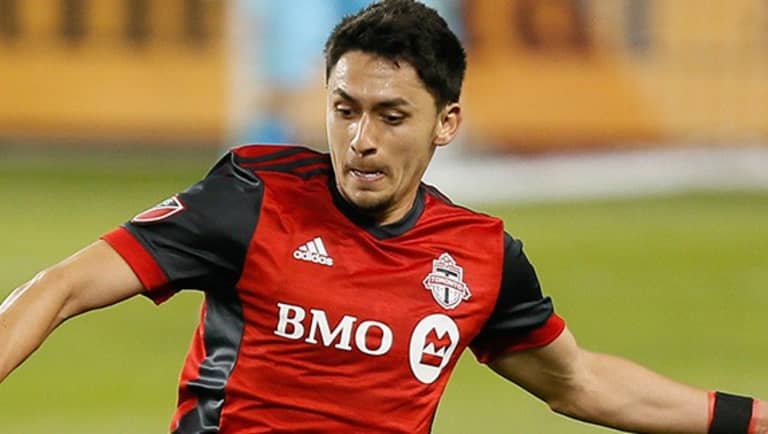
DOYLE: I share this concern, and I don't know if there's a single silver bullet. I will say this, though: Toronto FC are probably going to go down as the best single-season team in MLS history this year, and they've got one guy from the old Chivas RIP academy (Delgado) and a few guys from their own academy/TFC 2 system (Edwards, Osorio, Chapman, Morgan, Hamilton) playing big roles.
The Red Bulls, meanwhile, just lost a tough USOC final, and nobody in the league has matched their commitment to playing their locally grown players.
Teams are copy cats. If they see TFC and RBNY winning with academy products, they will be more likely to play their own academy products. It's clear, though, that there still needs to be a league-wide "proof of concept" moment.
BAER: Having many players with the Homegrown designation can also have a significant impact on the way a team chooses to allocate its resources in terms of scouting and spending. If you can sign Homegrowns to your supplemental roster (Spots 21-30), it leaves you more time to focus on players on the senior roster. Hitting on those players is especially vital in today’s MLS and being able to focus solely on those spots on the roster should lead to better results.
DOYLE: This is another chance to turn back to Toronto. Yes, they have the highest total budget in the league this year because they have three super high-paid DPs. But the median TFC player salary is actually below the league median because they've hit on so many of those supplemental and reserve roster spots. They don't just stash players there – they get real value because they've invested in their "path to the pros", so to speak.
The next step, for Toronto and everybody else, is to start developing those guys into All-Stars, and then to start selling them on for serious profit.
That takes institutional buy-in. A coach has to be willing to sacrifice the occasional result by playing the 19-year-old over the 31-year-old. It's hard to do that, even in a league where folks have good job security. But it's necessary as hell in order for MLS to take the next step both in terms of overall quality and as a business.
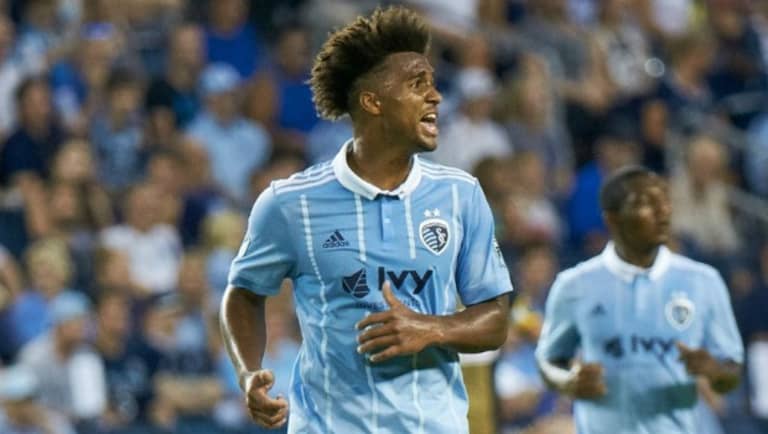
BAER: We actually have a recent example where a team chose to play a veteran over a promising Homegrown and it came back to bite them. With Erik Palmer-Brown likely moving overseas on a free transfer this winter, Sporting KC lost an opportunity to either re-coup the investment they put into the US youth international or reap the benefits of his play. Obviously Ike Opara is playing at an extremely high level this season, blocking EPB’s path to the starting XI, but let’s go back to 2015.
That season Kevin Ellis played 2,335 minutes almost exclusively at center back. EPB played just 376 minutes. SKC weren’t a top defensive team that season, and looking back on it, that may have been where Peter Vermes made his mistake by not giving the then 18-year-old more of an opportunity. After not receiving playing time in 2015, the Homegrown decided to go on loan to Porto in 2016 in search of playing time and was not able to beat out the excellent Opara for a spot this season. Compare that to the case of Matt Miazga and the Red Bulls, who, to be fair, was two years older than Palmer-Brown. Miazga was given an opportunity to be an everyday starter after some other players had lapses/injuries, excelled and the club were able to sell for a multi-million dollar fee.
A coach’s goal will always to be to win games, but should there be clauses in their contracts or a league-mandated rule to play Homegrowns? It would seem this would be beneficial for all.
DOYLE: Man, the words "league mandated" just cause me to raise my hackles a bit, right from the off. It's not that it can't be useful – it probably would be – but I just don't love the idea of trying to geo-engineer this type of cultural change from the top down.
I think the league's done a good job of mandating academy growth and expenditure, building the USL partnership and giving plenty of roster-building incentive with regard to Homegrowns. Adding a "must play X total minutes" rule is maybe one step too far for me.
What would maybe, possibly, potentially help more organically is to just straight up let teams keep 100% of the funds when a Homegrown player is sold, and to let them choose what to do with it. That way they're incentivizing from the business side of things (which they're very good at) rather than the playing-field side of things (which, sometimes not so much).
BAER: That would definitely give a team more incentive to play their Homegrowns and then possibly sell them if the timing was right. As we wind down on 2017, some teams are already looking forward to next season and how their rosters are constructed.
Who are some players that you would like to see get bigger minutes (>1,000) next season?
DOYLE: Let's start in Dallas. Remember when they were in the vanguard of the #PlayYourKids movement? Yeah, somehow that's stalled at least a little bit, and hopefully this late-summer death-spiral will mean a winterlong rethink that ends with both Reggie Cannon and Paxton Pomykal getting real burn next season.
I'm also ready to see more of Marco Farfan in Portland, Djordje Mihailovic in Chicago, Pierre Da Silva in Orlando, James Sands at NYCFC and Chris Durkin in D.C.
But the big one for me is Andrew Carleton in Atlanta. His ideas in the attacking third are of the "damn, I did not see that coming!" variety. I watch probably 350 soccer games a year across about 10 different leagues – there's not a lot that surprises me when I watch it.
Carleton does stuff that surprises me. Next year may still be too soon – he won't turn 18 until June, and you may have noticed that the Five Stripes have some pretty great wingers – but damn... I can not wait to see this kid take the field for real minutes.
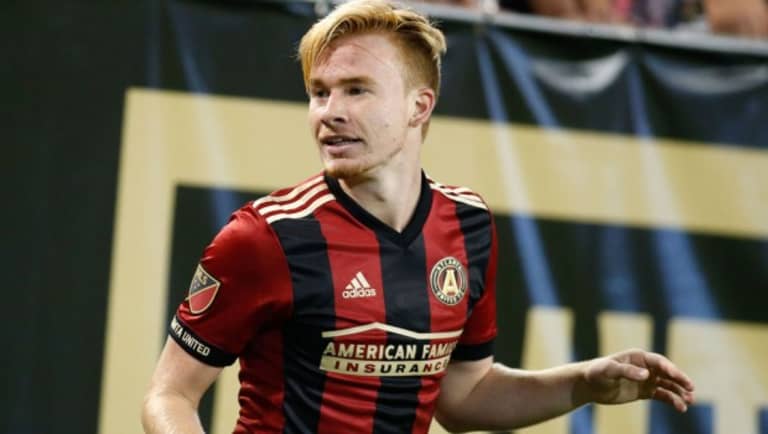
BAER: Carleton is definitely one to watch, especially if Yamil Asad returns to Argentina after his loan expires. With Andrea Pirlo likely leaving NYCFC after the season, and Yangel Herrera’s status up in the air for 2018, a spot in the midfield could open up for Sands. Anything else that hasn’t been brought up that you want to address?
DOYLE: If I was Atlanta I'd buy Asad outright, which does indeed make it tough to see Carleton getting full-time starter's minutes next year. But again: He'll be just 17/18, so as long as he's around 1000 minutes total and has an eye toward more in 2019, I'm good.
And that's a good point on Sands, though I do think it's safe to say that NYCFC will bring in another DP-caliber central midfielder. Both kids are gonna have to scrap and earn it if they're going to get on the field.
"Earn" is the big word though, right? Soccer's a business, and part of the business is always the ability to make a profit on the guys you develop. So far we've seen a little bit of that via the Homegrown route – Andy Najar, DeAndre Yedlin, Matt Miazga – but the general consensus is that MLS players are undervalued on the world market, which disincentivizes some sales (Palmer-Brown comes to mind).
Do you think MLS teams are going to have to resign themselves to selling these guys at something less than their assessed worth in order to create long-term demand for our players in Europe? I honestly can't see any other way.
BAER: With MLS having not been players on the world market for the most part, at some point you have to start setting benchmarks. Once the world market sees that the player they buy for $1 million is actually worth something more than that, they will begin to come in for more and more players. The problem with that is that somebody has to go first.
At some point, teams have to start selling their players a bit too early rather a bit too late. Did Dallas potentially miss a window by not selling Acosta in the winter or over the summer? Maybe. Did they do the same with Maxi Urruti and Michael Barrios? Definitely. You may not always get the return on investment you’re hoping for but it’s better than nothing, which is what SKC got for EPB. You could replace these players with players outside the organization, but it also could give an opportunity to Homegrowns. They then could continue building up their value and potentially become a player who nets even more than the last one.
DOYLE: The only thing I have to add to that is a correction to the last sentence: It's not that it could give opportunities to the next crop of Homegrowns, it's that it absolutely should give that opportunity.
Every MLS club has to start thinking a little bit more like Ajax in that sense. That's the next and most important step, both in terms of player development and business development.
So, you know, keep your fingers crossed that Miazga and Yedlin kick some ass.

